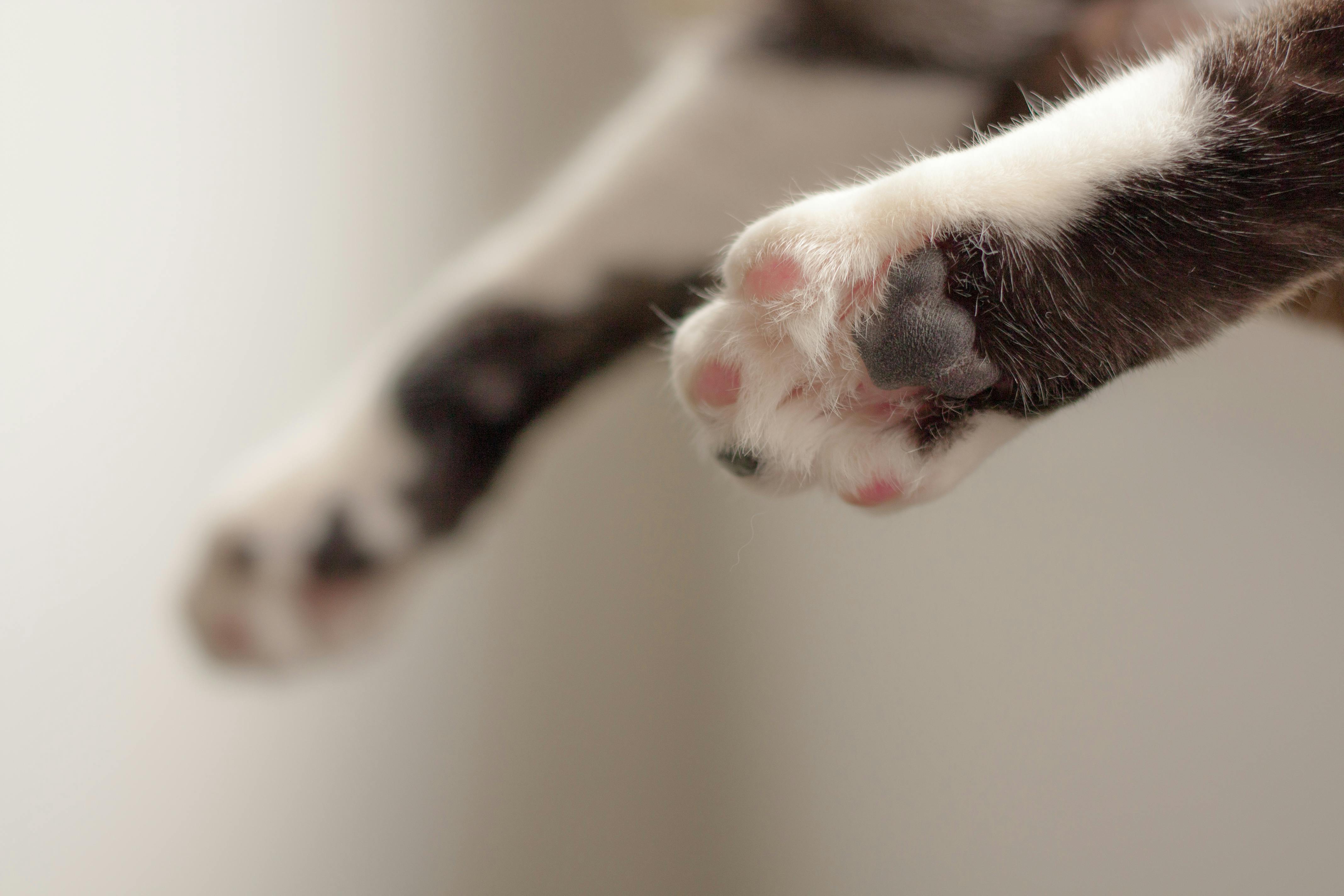 |
| Image credit: Pexels |
Pododermatitis, commonly known as “pillow paw,” is a concerning condition that affects cats' paw pads, leading to drastic swelling and discomfort. This inflammatory reaction can result from various underlying issues, ranging from poor grooming practices to infections caused by bacteria, fungi, or parasites. In this comprehensive guide, we delve into the intricacies of pododermatitis, its causes, symptoms, diagnosis, treatment, and preventive measures.
Causes of Pododermatitis
Poor Grooming
One of the primary culprits behind pododermatitis in cats is inadequate grooming. When cats fail to groom themselves properly, dirt, debris, and moisture accumulate on their paw pads, creating an ideal environment for bacterial and fungal growth. Over time, this can lead to inflammation and swelling, giving rise to the characteristic "pillow paw" appearance.
Infections
Pododermatitis can also be triggered by infections, including bacterial, fungal, or parasitic infestations. Bacteria such as Staphylococcus aureus and fungi like Malassezia pachydermatis are common pathogens associated with pododermatitis in cats. Additionally, parasitic infections, such as demodicosis caused by Demodex mites, can exacerbate inflammation in the paw pads.
Allergies
Allergies, whether environmental or food-related, can contribute to the development of pododermatitis in susceptible cats. Contact allergies to certain materials or substances, as well as food allergies, may manifest as inflammation in the paw pads, exacerbating the condition.
Symptoms of Pododermatitis
Identifying pododermatitis in cats requires careful observation of their behavior and physical symptoms. Common signs of pododermatitis include:
Swelling: The affected paw pads may appear swollen and enlarged, resembling a pillow-like texture.
Redness: Inflamed paw pads often exhibit redness and increased warmth to the touch.
Pain: Cats with pododermatitis may exhibit signs of discomfort or pain, such as limping or reluctance to walk.
Licking and Chewing: Affected cats may excessively lick or chew at their paw pads in an attempt to alleviate itching or discomfort.
Lesions or Ulcers: In severe cases, pododermatitis can lead to the formation of lesions or ulcers on the paw pads, accompanied by discharge or crusting.
Diagnosis and Treatment
Veterinary Examination
Diagnosing pododermatitis typically involves a thorough examination by a veterinarian. During the examination, the veterinarian will assess the cat's medical history, conduct a physical examination, and may perform diagnostic tests, such as skin scrapings or bacterial cultures, to identify the underlying cause of the inflammation.
Treatment Options
The treatment approach for pododermatitis depends on the underlying cause and severity of the condition. Treatment may include:
Topical Therapies: Applying medicated ointments or solutions to the affected paw pads can help reduce inflammation and control bacterial or fungal growth.
 |
| The Blissful Cat Paw Butter |
Oral Medications: In more severe cases or when systemic infections are present, veterinarians may prescribe oral antibiotics, antifungals, or corticosteroids to alleviate symptoms and promote healing.
Hygiene and Grooming: Proper grooming practices, including regular paw pad cleaning and trimming of excess fur, can help prevent recurrence of pododermatitis.
 |
| Arava Natural Pet Grooming Wipes with Silk Protein & Minerals for Dogs & Cats |
Allergy Management: If allergies are suspected as the underlying cause, identifying and managing the allergen through dietary changes or environmental modifications may be necessary.
Preventive Measures
Regular Grooming
Maintaining good grooming habits is crucial for preventing pododermatitis in cats. Owners should regularly brush their cats to remove dirt, debris, and excess fur from their paw pads. Additionally, keeping litter boxes clean and dry can minimize exposure to potential contaminants.
 |
| VCZONE 8 Pcs Cat Brush Grooming Kits |
Environmental Management
Creating a clean and hygienic environment for cats can reduce the risk of infections that contribute to pododermatitis. Regularly disinfecting living areas and providing clean bedding can help prevent the proliferation of bacteria and fungi.
 |
| UCARI Pet Sensitivity & Intolerance Test Kit for Dogs & Cats |
Dietary Considerations
Feeding cats a balanced diet rich in essential nutrients can support overall health and immune function, reducing the likelihood of allergic reactions that may trigger pododermatitis. Consultation with a veterinarian can help determine the most appropriate diet for individual cats based on their age, breed, and health status.
 |
| CRAVE Grain Free Adult High Protein Natural Dry Cat Food |
Conclusion
Pododermatitis, or "pillow paw," is a painful condition that affects cats' paw pads, often resulting from poor grooming practices, infections, or allergies. Recognizing the signs and symptoms of pododermatitis is essential for prompt diagnosis and treatment. By implementing preventive measures, such as regular grooming, environmental management, and proper nutrition, cat owners can help reduce the risk of pododermatitis and ensure their feline companions enjoy healthy and comfortable paws.
@nolacrazycatlady Mouse likes playing with her water fountain #CapCut #cats #blackcats #catvswater #watercat #catsoftiktok #lifewithcats #crazycatlady ♬ Barbie Girl - Lady Aqua




.jpg)






0 Comments